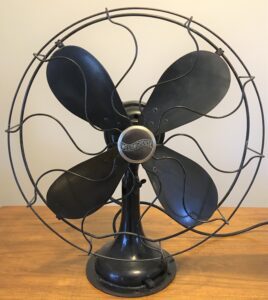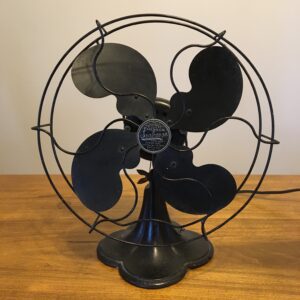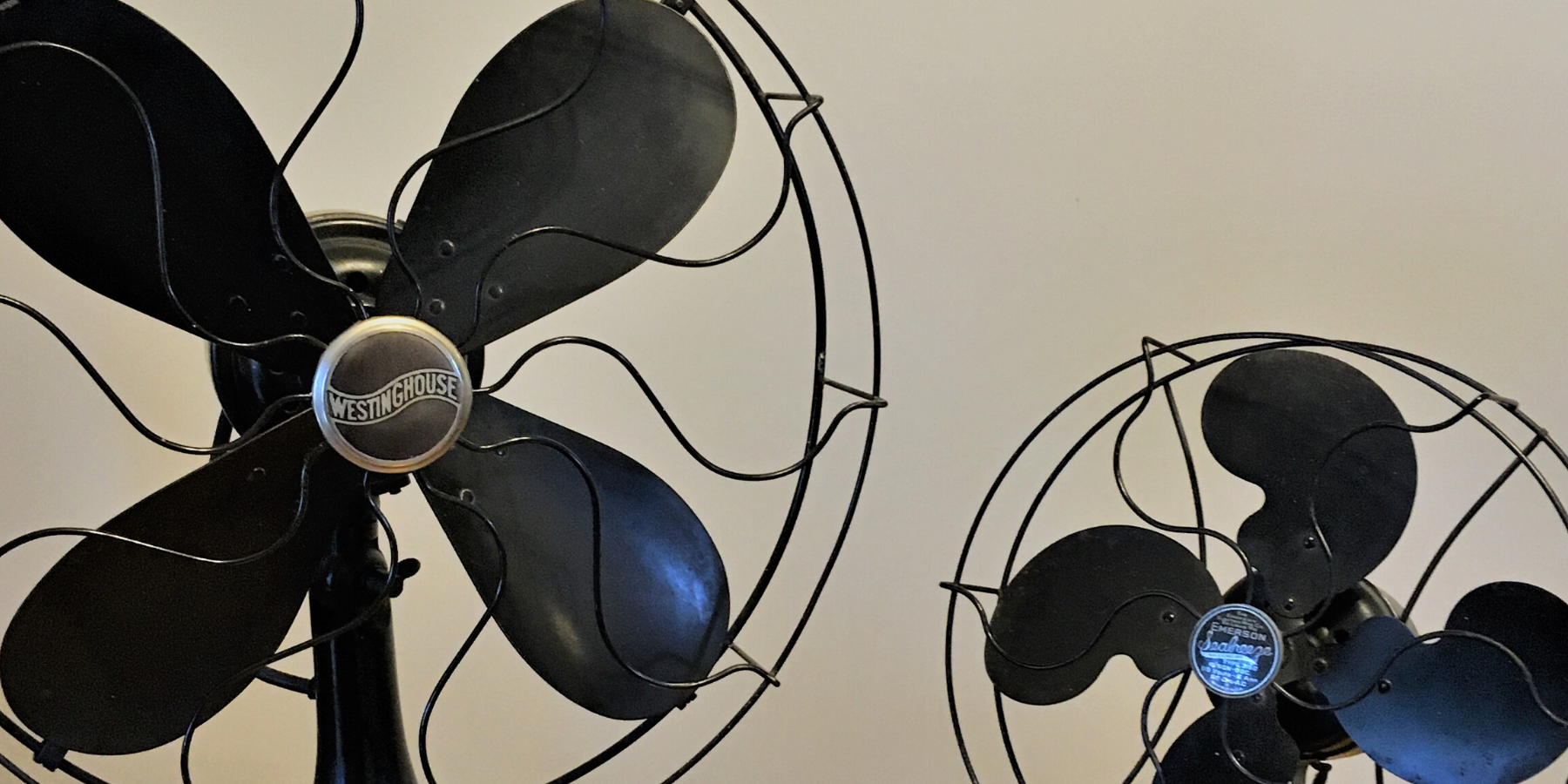Author: Suzanne Zaner
Shelburne Museum is affectionately described as being a “collection of collections”. Our founder, Electra Havemeyer Webb, was a well-known and significant collector of art and Americana. Today, that collection has grown into 39 buildings that house collections ranging from horse-drawn vehicles to Impressionist paintings, and everything in between. It would only be fitting that employees are also collectors of sorts. Today I would like to share with you what I collect: antique electric fans.
I began collecting antique electric fans about ten years ago. I started with fans from the 1950s and 60s but soon fell in love with the pre-1950 designs. My fans are all original and in working order (not bad considering they are between 80-100 years old). Early fans were expensive—the smallest and cheapest costing the equivalent of about sixty dollars in today’s money—and families would usually only have one, if they could afford any at all.
I would like to share with you two of my favorite fans, which are special because of their innovative designs.
The Westinghouse model 321347 fan is a beauty. While many collectors dislike the design due to the difficulty of disassembly, I love the aesthetic of it. It is a big fan with a whopping 17” diameter cage. It dates from about 1924, and the body is made of stamped steel. My favorite feature is the Bakelite Micarta blades. Bakelite Micarta is a laminate that was invented by the Westinghouse Electric Corporation of Springfield, MA, around 1910 to be used as an electrical insulator. Early Micarta was made of paper and cotton fabric impregnated with phenolic resin. Westinghouse learned that it could be molded into different shapes, and the Micarta fan blade was born. Quieter than steel or brass blades, it soon became the go-to for Westinghouse fans. Its three speeds, steep blade angle, and oscillating head made for a versatile, efficient, and powerful air-mover. It would have likely been used in a large room and mounted to a wall bracket.
The Emerson “Seabreeze” model 3150 fan dates to about 1936 and was made in St Louis, Missouri, by the Emerson Electric Manufacturing Company—the first company to manufacture electric fans in North America. It has a cast iron, four leaf clover-shaped base and painted brass Parker fan blades. The Parker blades were designed and patented by Herbert Parker, one-time president of Emerson. The unique fan blades are now often referred to as “Bullwinkle” blades, as they resemble the antlers on the iconic cartoon character from the early 1960s. It is a non-oscillating fan with an 11” spider-web cage. It only has one speed and was designed to be a desk fan.


Left: Westinghouse model 321347; right: Emerson “Seabreeze” model 3150
–
Why early electric fans? Well, my fascination with mechanical objects began at a very early age. My father was a professor of Industrial Technology at the University of Southern Maine and would sometimes bring home junked mechanical objects and encourage me to take them apart. I took apart watches, lamps, and motors—basically anything I could get a hold of. He was always enthusiastic about teaching me how things worked and through that I formed an appreciation for good industrial design. If I am going to collect something, it will not only be beautiful, but it will do work. I have found that this mindset has served me well as the Preparator at Shelburne Museum, where my job includes designing, fabricating, installing, and lighting exhibitions.

Suzanne Zaner, Preparator
Shelburne Museum

